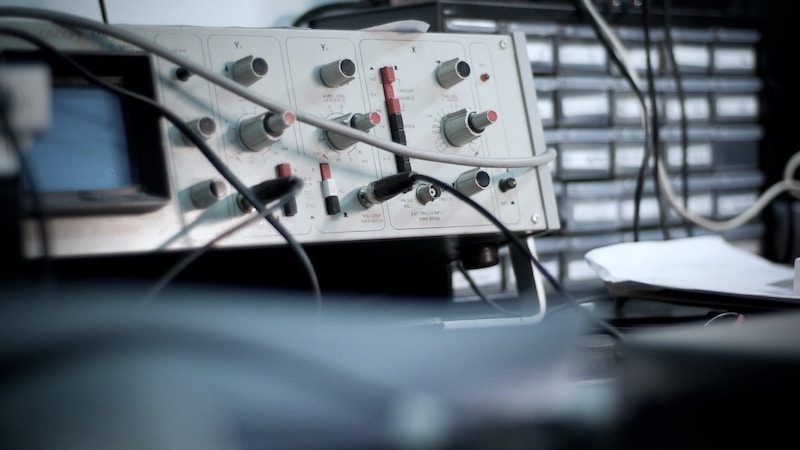Unconscious shame may seem like a vague, subjective concept. In the 1930s, Wilhelm Reich conducted experiments using an oscillograph showing that not only was shame—particularly sexual shame—measurable, but also that it was detrimental to life and wellbeing.
Documented in his 1942 book The Function of the Orgasm, Reich’s experiments have pretty much sunk without trace. Yet the tickertape of silver paper produced by his oscillograph tells us that genuine, cellular-level wellbeing is only possible by clearing all unconscious shame.
Who is Wilhelm Reich?
Born in 1897 in the Austro-Hungarian empire (now Ukraine), Reich graduated from the University of Vienna and became one of Sigmund Freud’s inner circle as the discipline of psychoanalysis evolved during the 1920s.
An early cornerstone of psychoanalysis was that every neurosis had a sexual aspect. Regardless of whether the patient was conscious of their sexual issues or not, character analysis revealed that disturbed sexuality underpinned all neuroses.
While Freud later focused on the ‘death drive’, Reich stayed true to this premise:
“There could be no thought of preventing psychic illnesses on a mass scale without a knowledge of the biological foundation of these illnesses. The premise ‘given gratifying sexuality, there are no neurotic disturbances’ was unassailable.”
— Wilhelm Reich, The Function of the Orgasm
After parting ways with Freud and mainstream psychoanalysis, Reich gravitated into the sphere of natural science to seek the “biological foundation” of neurosis.
Galvanisation
In the late 19th century, Georgian physiologist Ivan Tarkhanov (Ivane Tarknishvili in Georgian) showed that human skin acts like a galvanised surface and conducts an electric charge. However, as Reich dryly notes, “sexual pleasure had never been measured.”
Working in Norway in the mid-1930s, Reich remedied this major scientific blind spot. Assisted by the University of Oslo, he built “an apparatus consisting of a chain of electron tubes” connected to an oscillograph that measured the bioelectric potential (conductivity) of the body and reflected it via a mirror onto paper strips.
Reich describes his baseline findings:
“Under normal circumstances, the undamaged skin possesses a steady or basic potential… It is symmetrical on both sides of the body and is approximately the same over the entire surface of the body. It differs only slightly (10 to 20 millivolts) from person to person. The steady potential appears on the electrogram as an even, horizontal line.”
Sex and the oscillograph
As soon as Reich introduced sexual stimulation, the results changed:
“There are certain parts of the surface where the reaction is fundamentally different… These are the erogenous zones… Oscillations of up to 50 mv and more can be observed.”
Reich defined these zones as “the lips, mucous membrane of the anus, the nipples, the surface of the penis, the mucous membrane of the vagina, the ear lobes, the tongue, the palms, and—strangely enough—also the forehead.”
Reich found that these higher oscillations were always accompanied by a sense of pleasure: “The potential at an erogenous zone does not increase unless a streaming sensation of pleasure is experienced at that zone” [Reich’s italics].
Conversely, Reich found it was possible for people to be sexually stimulated yet not feel this “streaming sensation of pleasure.” Biological arousal could occur without any sense of sexual pleasure, indicating those parts of the body were numbed by shame.
Conclusions of the oscillograph tests
With his psychoanalyst’s eye, Reich saw the lack of sexual shame—and consequent lack of sexual anxiety—as the dividing line between these two data sets. Only “vegetatively alive, uninhibited men and women,” he wrote, experienced these streaming sensations. The term ‘vegetatively’ refers to the animating force of life itself.
This compares with the anxiety of those incapable of experiencing sexual pleasure, whose constricted, stagnant, or simply non-existent sex lives reflect their unconscious shame.
From this, Reich drew three conclusions with critical implications for wellbeing:
- The “identity between bioelectric and sexual energy.”
- The “fundamental identity between sexual process and life process.”
- “Sexuality and anxiety are functions of the living organism operating in opposite directions: pleasurable expansion and anxious contraction.”
Expansion and contraction refer to the basic pulsing of our cells. Healthy cells pulse fully and freely, experienced as life enjoyment and pleasurable streaming when sexually excited.
Hence the title of Reich’s book, The Function of the Orgasm. Orgasm is the greatest and most pleasurable expansion that our living organism can handle, the valve-bouncing redline of our bioelectric capacity to feel alive.
Shame negates sexual pleasure and diminishes bioelectric life energy.
Cells impacted by shame are constricted in their movement, creating an overarching sense of anxiety about both life and sex as it’s our primal, vegetative force that’s diminished. This surfaces in our endemic neuroses as well as, in my opinion, in humanity’s declining health standards that are statistically very well documented.
Cells that don’t pulse at all are dead. Sex is life-affirming; shame is death-affirming.
Wilhelm Reich’s 1930s oscillograph experiments reveal the literally painful truth of shame. Nearly a century later, this remains a conversation that much of humanity is unready for.
Next steps
For further resources on shame, both free and paid, please click on this image.
Photo by Blaz Erzetic on Unsplash


